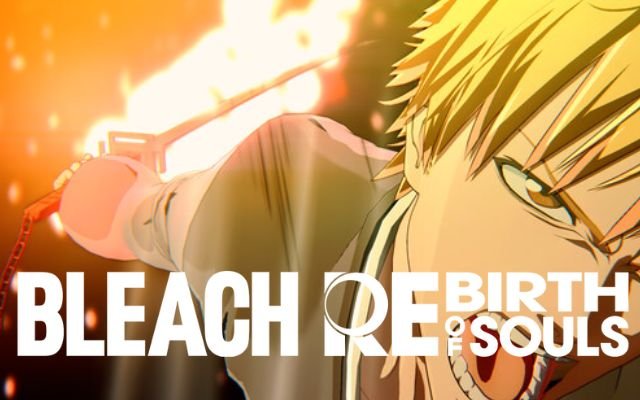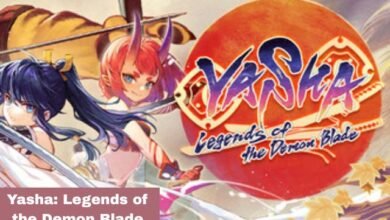Bleach Rebirth of Souls Review
Bleach Rebirth of Souls delivers fun combat and style, but story cutscenes and controls leave room for improvement.

Bleach has always been the flashiest in the shonen anime “big three,” standing proudly alongside One Piece and Naruto. But when it comes to arena fighter games, Bleach has often felt like the middle child—good, but never great. Bleach Rebirth of Souls is here to change that. This new game aims to go beyond the typical anime fighter, delivering a fresh and exciting experience for fans and newcomers alike.
The story mode is a bit of a mixed bag. At times, it feels like a rushed visual novel but other moments truly capture Bleach’s signature style with stunning visuals and action. Thankfully, what really saves Rebirth of Souls is its deep and challenging combat system. Developer Tamsoft has done an impressive job of making fights more than just flashy button-mashing, even if there’s still some room to improve.
At first, the game’s tutorial throws a lot of anime-specific terms at you, which can feel overwhelming. But to keep it simple: this is a 3D arena fighter that blends Super Smash Bros.’ life system, Sekiro’s stance-breaking swordplay, and Bleach’s iconic visual flair. Unlike other anime fighters where you can often win by spamming one combo, Rebirth of Souls feels like a real back-and-forth battle. Victories are earned, not handed out.
Each sword strike feels powerful, and teleporting around to catch enemies off guard is always satisfying. Even on the Standard Mode, which simplifies combos, there’s still depth in each character’s playstyle. For example, Shinji focuses on counterattacks, while my personal favorite, Soi Fon, is a fast-paced brawler. Watching her dart around the battlefield, trapping enemies in flurries of punches and kicks, never gets old. Her super move, a huge missile arm cannon, is both ridiculous and awesome—making her an easy choice as my main.
That said, Standard Mode can start to feel a bit repetitive after a while, as you rely mostly on basic combos and supers. The game also struggles with movement feeling a bit stiff, and there aren’t many defensive options when you’re under pressure. Unlike other games like Naruto or Dragon Ball, which give you ways to charge your super or escape tricky situations, Rebirth of Souls feels less forgiving. The limited movement and unreliable ranged attacks make competitive play a challenge.
Manual Mode Feels Like the Proper Way to Play for Competitive Battles
Outside of two defensive mechanics — Awakenings and Reversals (with Awakenings boosting your damage in late-game fights) — the only way to charge your super moves or flash step teleports in Rebirth of Souls is by landing enough combos. This limited system makes defense feel weak, especially when blocking an enemy’s attack can be broken by their combo into a guard breaker, which is rare in well-balanced fighting games.
Because of this, Standard Mode matches often feel exhausting, as you wait for your flash step bar to refill or hope you don’t get punished by awkward attack ranges. Luckily, Manual Mode improves this experience by giving you the freedom to mix and cancel light and heavy combos into special moves. This makes Manual Mode feel like the true way to play for anyone wanting a more serious and skillful fighter. You’re no longer stuck in basic combo loops — instead, you can create endless attack strings and experiment with powerful combos that both deal high damage and look great.
That said, there’s still room for improvement. Manual Mode would benefit from faster dashes, better attack range accuracy, and stronger defensive options to make battles feel more fluid and less restrictive.
In Rebirth of Souls, building up your super moves or flash step teleports relies heavily on landing enough combos first. Outside of two defensive mechanics, Awakenings and Reversals (with Awakenings being a late-game power boost), your defensive options are quite limited. Things get frustrating when even a well-timed block can be broken by an opponent comboing straight into a guard breaker — something that’s rare in well-designed fighting games.
This design makes Standard Mode feel slow and repetitive. You often find yourself waiting for your flash step bar to recharge or hoping you don’t get punished because of awkward attack ranges. Thankfully, Manual Mode improves the experience a lot. It lets you freely mix or cancel light and heavy combos into special moves, giving fights a much better flow. Manual Mode feels like the proper way to play if you’re looking for serious action, as it allows more freedom to chain attacks and express your playstyle. However, the game could still benefit from improvements like smoother dashes, better hit detection, and more defensive options to make matches feel less stiff.
As a long-time Bleach fan, I was really hoping for a great story mode. Sadly, it’s a mixed experience. In anime fighters, cutscenes should feel like rewards, building excitement between battles — like in Naruto: Ultimate Ninja Storm. But in Rebirth of Souls, story scenes often feel awkward and underwhelming. Instead of epic moments, you get clunky animations with characters stiffly launching energy blasts at each other. Dramatic fights turn into poorly animated sequences, and emotional moments fall flat as characters move awkwardly in bright, low-detail arenas.
Even big moments, like sword clashes and beam struggles, lose impact because they’re interrupted by constant screen cuts and placeholder-looking effects. The story mode feels rushed, like a rough first draft, hoping Bleach fans will play based on loyalty alone. It’s a real shame because both the English and Japanese voice actors deliver great performances, and the character models look fantastic during battles.
That said, there’s a silver lining. Despite the rough animations, Rebirth of Souls captures the fun and silliness of Bleach’s filler episodes. Some story chapters are surprisingly charming, featuring characters playing soccer, visiting haunted houses, or competing in fighting games. These lighthearted moments give side characters like Shuhei and Izuru more personality, making you want to explore their fighting styles even more.
Pros and Cons of Bleach Rebirth of Souls
| ✅ Pros | ❌ Cons |
|---|---|
| 📖 Story is told in good detail | 🎞️ Cutscenes look cheap |
| 🥋 Fun and deep fighting system | 🔁 Campaign feels repetitive |
| 🎶 Cool music and visuals | 🎮 Controls are hard to learn |
Conclusion
Bleach Rebirth of Souls stands out from typical anime arena fighters with its deep combat system and unique character playstyles. While the story mode falls short of the excitement seen in the battles, the sharp sword effects and bold move animations help balance things out. Even though it doesn’t completely live up to its goal of redefining the genre, Rebirth of Souls is still a great addition for Bleach fans and anime fighter players alike.



